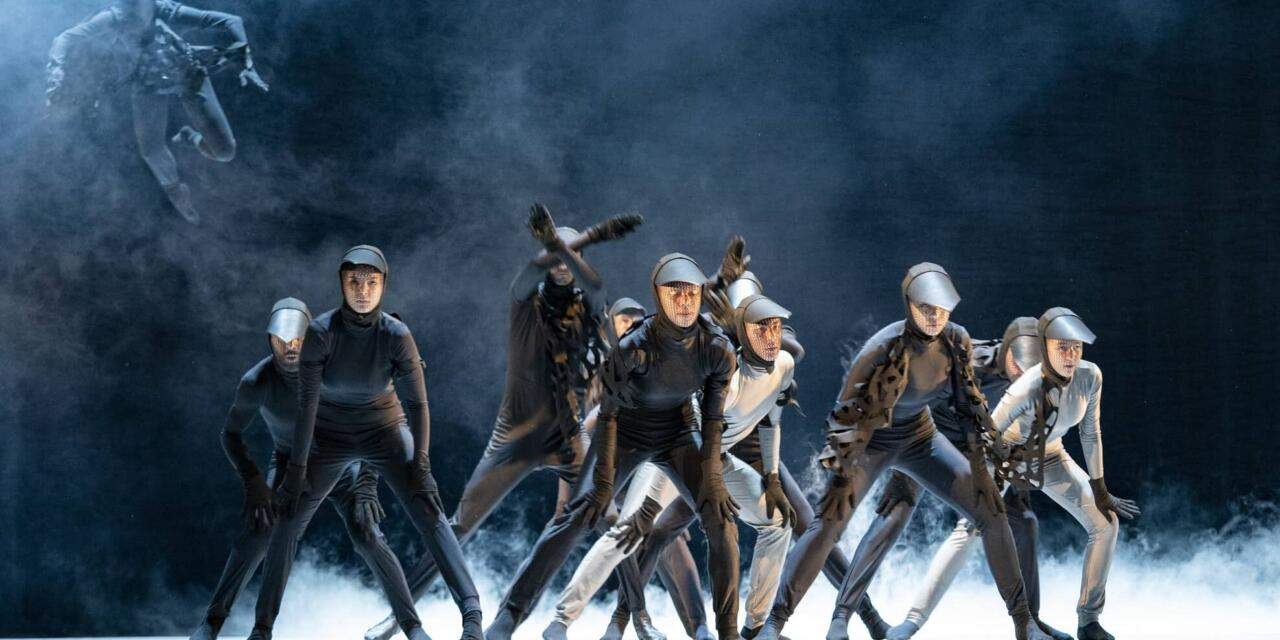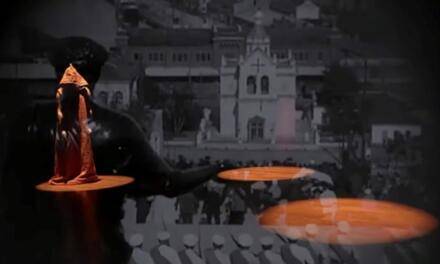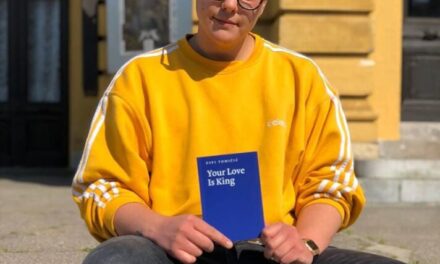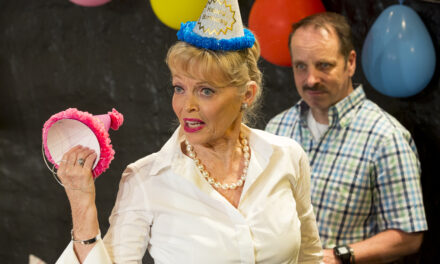National Theatre, Belgrade, premiere 12th March 2022
The Years of Crows is the great comeback for writer and politician Siniša Kovačević. His last piece, The Great Drama, which he also directed was performed at National Theatre in Belgrade in 2002, where it is still in the repertoire.
The first act of the play, which depicts occupied Belgrade during the First World War, is ominous and full of tension, while the second act depicts the liberated capital after the victory.
In this first act, the Austro-Hungarian officer Kavran mercilessly condemns the Serbs to the gallows for petty crimes. Occupying soldiers’ rape helpless Serbian women and shoot children. The Serbian characters are shown to possess incredible perseverance and honesty in the most difficult situations. In the second act, which takes place after the liberation, the Croats and Slovenes who served in the Austro-Hungarian army are now comrades-in-arms of the Serbian soldiers with whom they fought against ion the battlefield until yesterday. We see the Serbian officers rebelling against the formation of a joint Kingdom of Serbs, Croats and Slovenes and tensions arising as a result. The same sense of misfortune, gloom and ominousness is present in both acts, during the occupation and afterwards.
All this revolves around a love plot. Despite internal resistance, a Serbian officer Živojin Rajić falls in love with Kavran’s wife who stays in Belgrade after the war. Živojin and his family face condemnations from the citizens of Belgrade who do not approve his love for her. It quickly becomes clear that author uses this relationship as a means of elevating the Serbian characters and emphasising national self-victimization. Despite the condemnation, the Serbian officer is capable of love with the enemy and is ready to lay down his reputation and life for that love.
The acting style is melodramatic, but this largely suits the nature of the plot. Emotion arises because from exaggerated gestures, movements, facial expressions and exclamations.
Ljiljana Blagojević, in the role of Katica Rajić, stands out the most in this respect. Aleksandar Srećković as Alojz Kavran and Bojan Krivokapić as Mijat Tamnavac are the only ones who manage to create believable characters with restrained performance. The main actors, Petar Sturgar, who portrays Živojin Rajić, and Kalina Kovačević, who plays Julia Kavran, are pale and unconvincing in comparison. Sad piano music and other effects are used to compensate for the inadequacies of their performances.
Half of the cast is made up by a ballet ensemble. In black costumes and pointy hats, they represent crows and symbolise death (costume design: Marina Medenica). The rest of the ensemble wear realistic: civilian clothes and uniforms are from the First World War period.
There are 60 scenes in this three and a half hour production and between each of these scenes, the crows have a dancing intermezzo. Though this is a period piece, choreographer Isidora Stanišić demonstrates her knowledge of various types of dance moves ranging from classical ballet to breakdancing. The crows always dance to the same few bars of the “Radetsky March” by Johann Strauss, recorded in the style of a militant whistle (composers Bora Dugić, Vladimir Petričević). Given that many of the scenes last only a few seconds, there are many inserted dance sequences and the feeling of repetition occurs very quickly,; eventually these choreographed sequences become a nuisance that disrupts the plot.
The scenography (Geroslav Zarić and Vladislava Kanington) is minimalistic. During the entire performance high above the stage, almost imperceptibly, a large cloth is swaying, representing the gloomy sky. A sombre torn fabric hangs from the ceiling to the podium further depicting the time of distress and decay.
Judging by the impressions presented in The Years of Crows, you would think Serbia lost the First World War. However, Serbia was on the winning side and it contributed significantly to the victory with numerous heroics. Why then does Kovačević insist on portraying the time after the war as equally anxious as it was during the war and why does he present dissatisfaction with the formation of the Kingdom of Serbs, Croats, and Slovenes as the only feeling of that era?
The answer lies in what the Serbian historian Dubravka Stojanović calls “the national trance industry”. It is based on the effect of historical revisionism, whose originator was the writer and politician Dobrica Ćosić. In his works, victory in war becomes defeat, and heroes become unnecessary victims. This insistence on defeat and victims highlighted by Dobrica Ćosić in the works of other artists and politicians became the dominant narrative of the 1980s. In such artistic projects, the Serbian nation must be a victim, and its existence always painful. The function of such narrative is to homogenize public opinion and mentally prepares it to accept war with their neighbours portrayed as evil enemies. The goal of that war is an ethnically homogenized, independent state.
Both, Dubravka Stojanović and theatre scholar Mirjana Miočinović, each in their field of expertise, state that the theatre was one of the main tools of such nationalistic hysteria. They emphasise how it played a key role in the acceptance of the war and isolationist policy that brought Slobodan Milošević to power and initiated the bloody disintegration of Yugoslavia during the 1990s.
In a sense, the 1990s are still going on. With the undefined status of Kosovo Serbs still do not have a consolidated national state. That is one reason why the narrative of the 1990s has survived to this day.
As part of such nationalistic advocacy Kovačević generalizes national characteristics all the time. The problem is that only Serbian characters suffer, and the capacity for crimes he reserves only for non-Serbs. Yes, the Serbs were under occupation during the First World war and they did lead a liberation struggle, and in that sense, justice is on their side, but the question is what historical facts someone decides to present in their play and what message such writing and directing sends.
Due to the large number of scenes that exclusively depict members of certain nations, Kovačević’s dramaturgy starts to resemble a dramaturgy of hatred towards the other. At the same time, he is creating a narrative of national pride based on insidious subterfuge that prohibits self-criticism.
This is a well-known process for the Serbian public. We witness such narratives not just in the artistic, but in the political arena also. The regime of Aleksandar Vučić revives this policy of national homogenization based on self-victimization and hatred towards others through political speeches and pseudo-theatrical performances during the opening of monuments, military and police parades and other celebrations. It has proved to be a successful way in maintaining the support of the conservative electorate.
With his artistic activity, Siniša Kovčević contributes a lot to Vučić’s regime, which he opposes. Nevertheless, that opposition is only nominal because their politics and aesthetics have much in common. Judging by The Years of Crows, their goals and the means they use are equal, and the consequences of this could be terrifying.
Credits:
Author and director: Siniša Kovčević
Dramaturge Danka Sekulović
Set Designers Geroslav Zarić, Vladislava Kanington
Costume Designer Marina Medenica
Ballet Costume Designer Petra Fotez
Composers Bora Dugić, Vladimir Petričević
Choreographer Isidora Stanišić
For tickets and further information, visit: NarodnoPozoriste.rs
This article was originally published by SEEstage on Jul 10, 2022, and has been reposted with permission. To read the original article, click here.
This post was written by the author in their personal capacity.The opinions expressed in this article are the author’s own and do not reflect the view of The Theatre Times, their staff or collaborators.
This post was written by Andrej Čanji.
The views expressed here belong to the author and do not necessarily reflect our views and opinions.


















